Thanks to the internet, anyone can start a business in any part of the world. The ecommerce industry is booming right now as more and more people buy online.
Consumers feel much more comfortable these days giving sites their credit card details.
So, if you’re planning to start an ecommerce business, you’re not alone. There are lots of people doing the same right now.
But you need a solid ecommerce business plan. Without it, you’ll be setting your business up for failure.
You can launch your own ecommerce store within a few minutes. You don’t need to be a proficient internet user. Tools like Shopify, WooCommerce, BigCommerce, and Etsy make it easy for anyone to launch their own online shop.
If your goal is to make a serious income from your online store, you need a plan. If selling online is a hobby to you, then you probably don’t need a plan. You can use online tools for project planning.
The web is full of stories of entrepreneurs who started online stores at the comfort of their homes.
A mother and son founded Blu Kicks, an online sneaker store, and today it’s one of the most successful stores hosted on Shopify.

By applying what you’re about to read, you’ll create a plan that future-proof your ecommerce site.
Why do you need a business plan?
Formulating a solid ecommerce business plan may take some time. It may take a few days to put a complete plan together. If your business is big and the products or services are complex, it may take a few weeks to create a great plan.
Many find the process boring and time-consuming.
Here’re the four reasons you should create a plan before you start an ecommerce business:
- You’ll know the do’s and don’ts before you begin
- You’ll know if the business would be sustainable
- You’ll know what you have to do to make the business successful
- You’ll realize what you know and what you don’t know
Step 1: Create a One-Page Business Plan
Create a one-page business plan using the business model canvas.
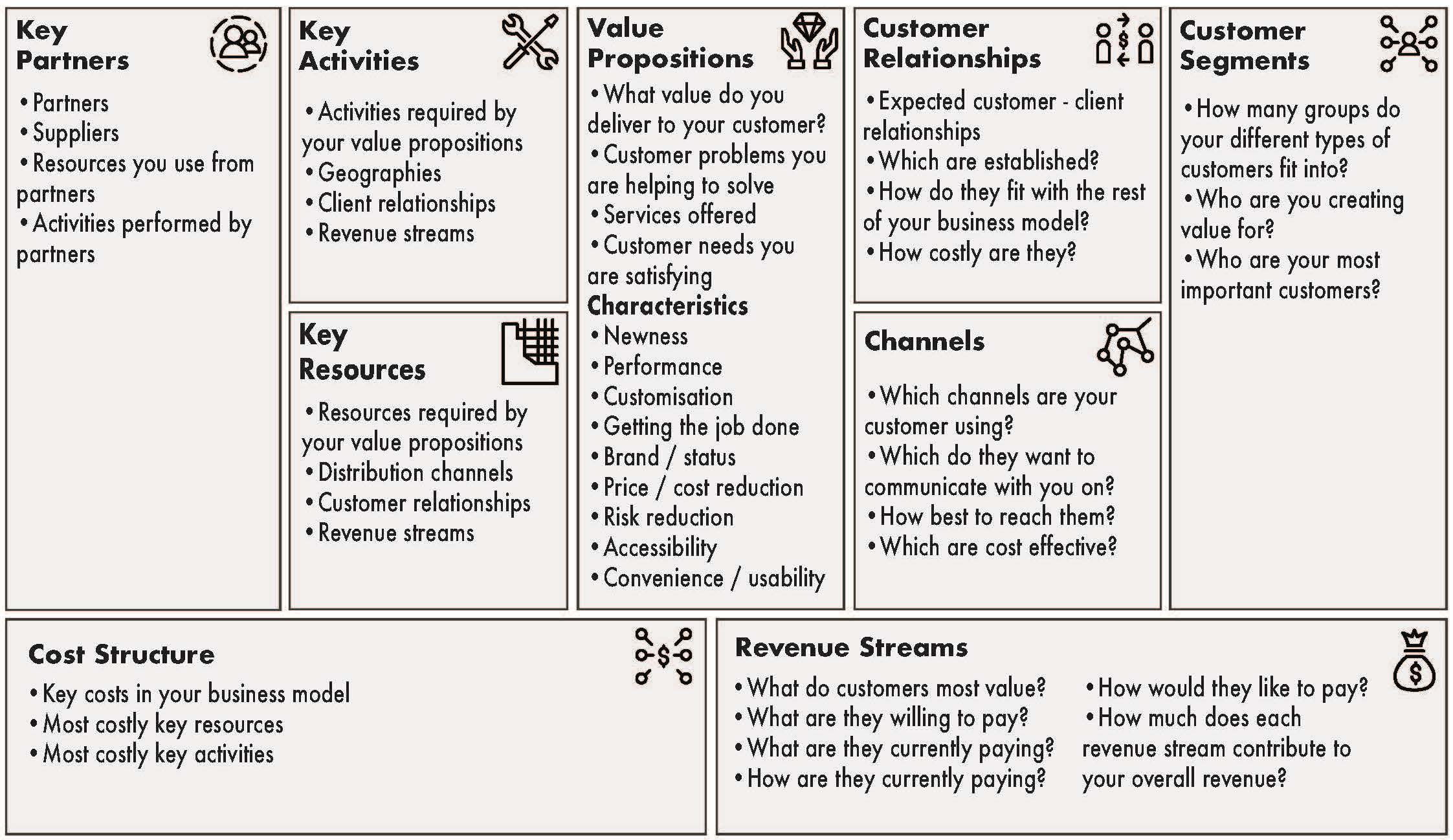
Note that this is just a one-page business plan that helps you learn about your business. It’s a good place to start when creating a business plan.
I’ve heard from some people who simply didn’t proceed to step 2 because they thought that they can’t do it. If you’re excited doing this first step, that positive energy will take you to step 2.
Here are the different sections of the business model canvas:
- Partners: Who are the key people you need to build a successful ecommerce business?
- Activities: What are the actions you need to take for your business to be successful?
- Resources: What are the key things you need for your business to be successful?
- Value Proposition: Why should prospects do business with you rather than your competitors?
- Customer Relationship: What is the key thing that will be the most important in your customer relationships?
- Marketing Channels: How and where would people discover your business?
- Customer Segments: All customers aren’t the same. How do you divide customers into different sections?
- Costs: What are the things you need to spend money on to generate income for your business?
- Revenue Streams: What are the different ways you’ll make money?
All the above shouldn’t take you long to complete.
Here’s a perfect example of a business model canvas.
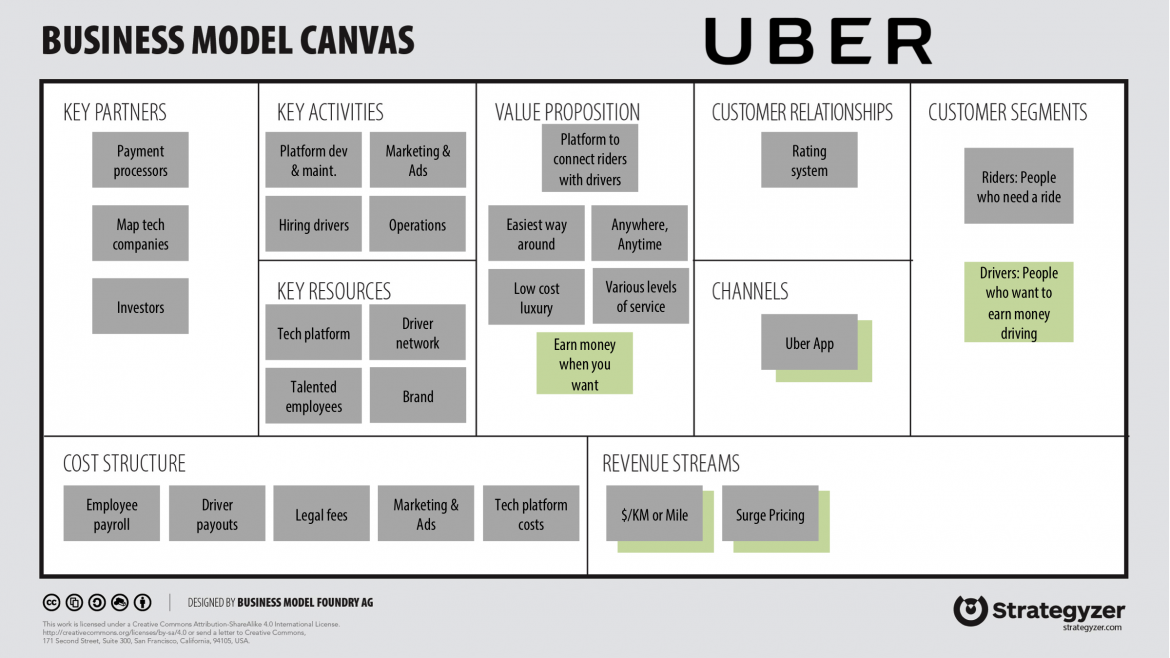
It doesn’t have to be perfect.
You only need to complete this step to have a clear picture of how the business works. You’ll also know if it’s something you want to do.
There are three questions you must answer before proceeding to step 2. Don’t write weak answers. Write emphatic and convincing answers.
So, here are the three most important questions:
- What needs are you satisfying?
- What are the actions you need to take for your business to be successful?
- Why should prospects do business with you rather than your competitors?
The first question wasn’t part of the business model canvas. But it’s an important question you must answer before you move to the next step.
Note that you should answer these three questions outside the business model canvas.
The next two questions are part of the business model canvas. The canvas may not have enough space for you to answer them in a detailed way.
Because they are so important to the success of your business, it’s time to think and write thorough answers.
If you struggle while trying to answer these questions, you may want to do some research online. Or maybe, speak to a few people who know some things about the industry.
Once you’ve completed answering the above three questions, it’s time to finally move to step 2.
Step 2: Create a Traditional Business Plan
In step 2, you’ll create the real business plan that reveals everything you need to know.
The plan you create at this stage is the ultimate plan. It’s the plan you’ll use to seek out funding or loans if needed. It’s the plan that will give you an edge over competitors who don’t have one.
Don’t skip this step because it’s as important as step one.
There are six sections you must include in your traditional business plan.
Section 1: Write about your company
This first section should include everything anyone would want to know about your company. Include everything here.
Don’t think that you have nothing to write about. There’s a story behind everything.
Where did you get the idea for the business? Why are you starting the business? What’s your personal story?
Write everything here.
Write your mission and vision statements. Include boring details like your business structure and the date you established the business.
People are always interested in these details. It makes them feel they’re dealing with a real company with history. It helps you start believing in the long-term future of your ecommerce business even when you’re yet to begin selling.
For example, Moz shares their history and vision on their About page.
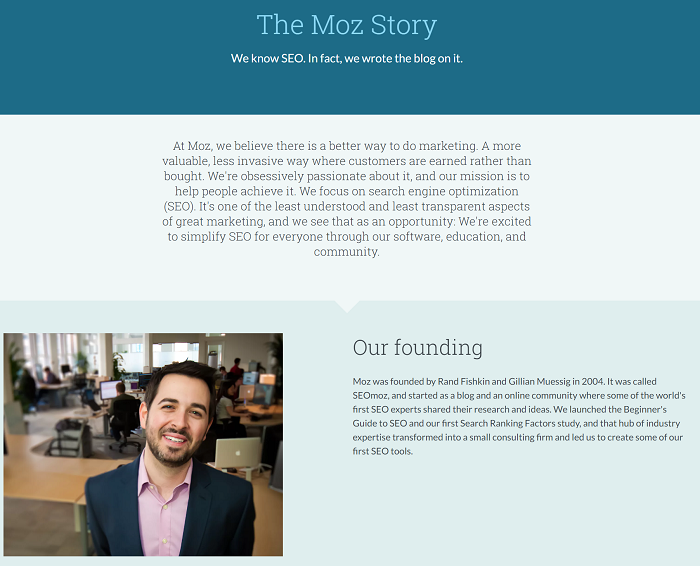
Here are more ideas for what to include in your company’s about section:
- What kind of product or service do you sell?
- What’s your industry?
- Who are the people in your team?
- What are your short and long-term goals?
- Is your company a sole proprietorship, limited liability company (LLC), or corporation?
- What date did you establish your business?
For example, Circle Surrogacy has one of the best about pages I’ve ever seen. They use their about page to tell the story of the founder, the team, and a few of their clients. They went even further by using the about page to address objections potential clients may have.
Section 2: Write about your market and competition
This is another important section that requires a lot of details. You may need to do some research into your market, or industry and the competition.
Write everything you need to understand your market and competition.
For example, what’s the demand like for the kind of product or service you intend to sell?
If the market is already saturated and you plan to go niche, you need to explain how you want to market in that niche.
I’m a big fan of going niche when starting. It helps businesses focus on winning a small percentage of customers and satisfying them well with quality products or services.
Explain if there’s enough prospects in that niche. If there isn’t, you may want to move to other niches, or you combine two niches.
For example, if you cater to stay-at-home moms and there isn’t enough market for that, you may want to expand to stay-at-home dads.
For example, Nerd Fitness started with a niche. They focused on nerds and gamers who want to become fit.
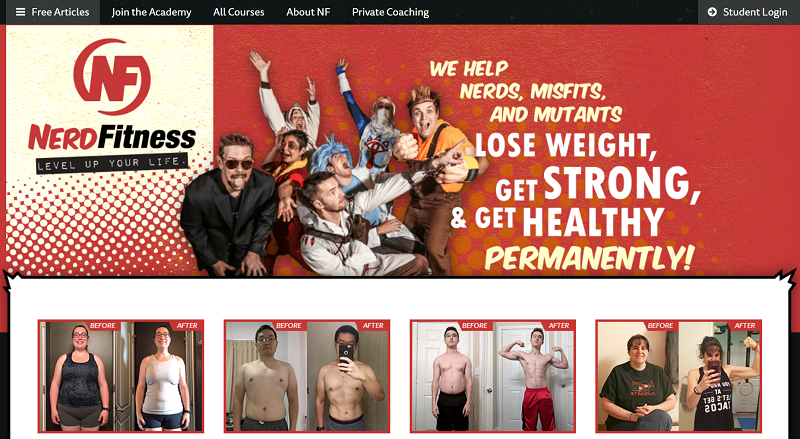
Write as much as you need to know. You don’t have to use the correct words the first time. Don’t try to make each sentence perfect. You can come back and edit it later.
I use Microsoft Word or Google Docs for this. I’ve met people who write their plans on paper. Do what works for you.
I’ll like to introduce two analytic tools I use for this section to help me learn further about the market and competition:
- PEST analysis
- SWOT analysis
PEST analysis helps you recognize political, economic, social, and technological factors that may affect market growth or decline in the future.
SWOT analysis helps you detect strengths, weaknesses, opportunities, and threats that may be present to your company and competitors’.
Do PEST analysis first because it represents bigger factors that may affect SWOT.
Below is an explanation of each factor in PEST analysis:
- Political: Recognize politically motivated factors that may affect your business. Examples are government policies, competition regulation, trade restrictions, consumer protection laws, etc.
- Economic: Recognize economic forces that could impact your ecommerce business success. Examples are industry growth, seasonal factors, international trade, international exchange rates, monetary policies, etc.
- Social: Recognize social attitudes, behaviors, and trends that may impact your audience. Examples are customer service, the environment, leisure, family size, lifestyle trends, etc.
- Technological: Recognize how technologies can affect the way you make, distribute, and market your product and service.
The below is a PEST analysis template:
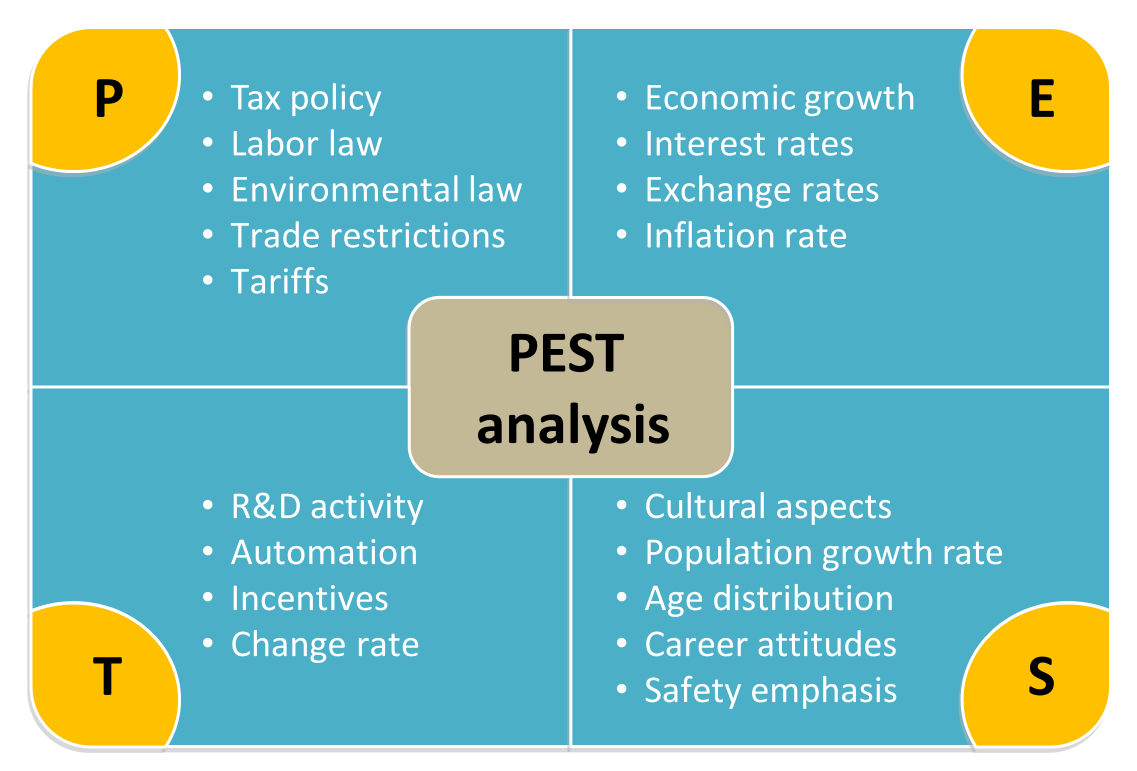
SWOT analysis is a powerful analytic tool that helps you develop your business strategy and position your company effectively.
Below is an explanation for each factor in SWOT analysis:
- Strengths: These are the positive characteristics that give your ecommerce business a competitive advantage over competitors. Examples of these are brand and reputation, patents, location, story, etc.
- Weaknesses: These are issues that reduce your competitiveness and require improvements. Examples are lack of skills, funds, expertise, aging infrastructure, inflexible workforce, etc.
- Opportunities: These are the reasons why your business is likely to grow. Examples are new markets, new technology, changes in government policy, etc.
- Threats: These are issues that might prevent growth and competitiveness. Examples are new competitors, political change, environmental conditions, etc.
Doing PEST and SWOT analysis will help you better position your business for positive and negative events. By using these analytics tools, you’ll be able to take advantage of opportunities when they arise, and deal with threats before they become a problem.
Here’s an example of a SWOT analysis template:
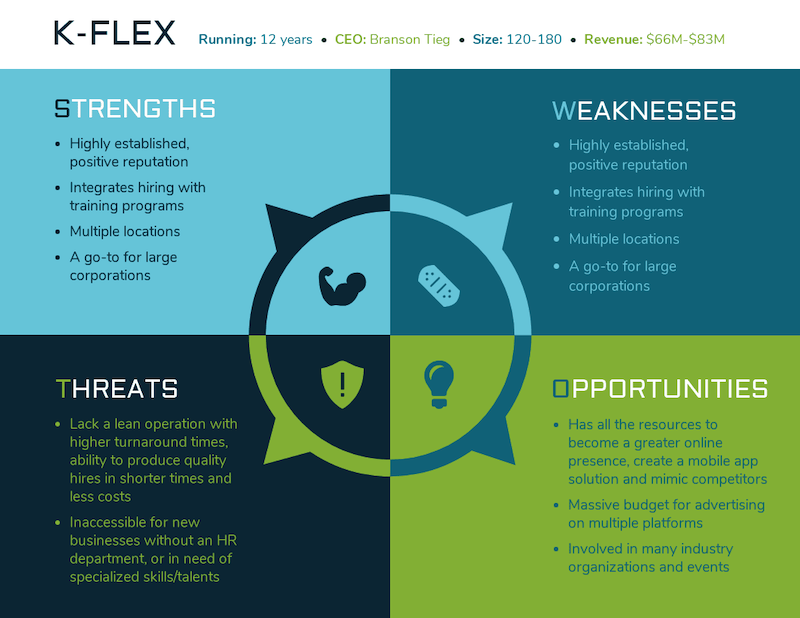
Let me give you a real instance of a business that uses PEST and SWOT.
An ecommerce business that heavily relies on Facebook ads for sales would pay attention to Facebook’s data privacy scandals that are generating a lot of publicity.
There’re reports that the US congress may soon introduce some privacy laws.
The owner of the ecommerce business may want to position their store to rely less on Facebook.
As a smart business owner who uses PEST and SWOT analysis, it means it’s time to invest more in other marketing channels and strategies that won’t be adversely impacted by privacy laws.
Section 3: Create a marketing plan
A marketing plan is a strategic roadmap that helps you organize, execute, and track your marketing strategy over a given time period.
A single marketing plan can include as many marketing strategies as you want. I highly recommend that you have five or more marketing strategies when creating your business plan.
You can try two or three at each time to discover the ones that give you the best return on investment (ROI).
A marketing strategy describes how your ecommerce business will accomplish a goal. It includes the campaigns, content, channels, and marketing software you’ll use in the process.
For example, let’s say you want to use YouTube marketing as a marketing strategy. You’ll include the kind of video content you’ll create, how and who will produce them, how you’ll promote your videos, make sales from the videos, and more!
Each marketing strategy must contain complete information about its process.
Determine the KPI (key performance indicator) you’ll use to measure the success of each marketing strategy.
If you’re doing YouTube marketing, your KPI could be YouTube views, likes and comments.
(youtube-marketing-key-performance-indicator)
Have a clear goal for each marketing strategy. What do you want to achieve with it?
It could be more sales. More YouTube subscribers. Or, more email subscribers.
Each marketing strategy you plan to execute should have a budget assigned to it. Not spending more than that budget is key to making your marketing plan work.
After assigning a budget to each marketing strategy you want to execute at a time, calculate the total marketing budget and put it at the top of your marketing plan. That reminds you how much you’re willing to spend each day, month or year on marketing.
If you have five marketing strategies, with each one costing $500 per month, then your total marketing budget would be $2,500 per month.
Section 4: Write a full description of your business operations
Here’s the section you describe in full detail, the day-to-day operations of your business.
In this section, you should fully explain how many employees your ecommerce business need and the role of each one. If you’re a solo entrepreneur like many new ecommerce owners, make clear your everyday tasks.
Write how your Mondays, Tuesdays, Wednesdays, etc. would be like. What do you do each day?
How do you create, promote, deliver your product or service?
What are the things you need in place to make your business run smoothly?
How long would it take to create and deliver each product or service?
How do you collect feedback from customers and integrate it into your product and service?
What’s your plan for dealing with a major increase in demand from customers?
Include every detail about your business operation in this section. Keep in mind that you don’t have to write the perfect sentence at first. You can edit everything later.
This section is crucial for both the short and long-term operations of the business. Dealing with it upfront will help your business run smoothly and stay organized.
Of course, you can always come back to this section and add or remove some information.
Ecommerce business owners who don’t outline their business operations and tackle issues before they arise often feel stressed out in the beginning. Everything becomes unexpected and overwhelming.
It’s when they start dealing with orders, customer complaints, product creation, etc. that they realize the business is understaff or overstaff.
Section 5: Write every detail about your business finances
This is where you create a budget for your business.
Write how much you plan to invest in your business idea.
List and calculate all the expenses.
By now, you should know if the business can be profitable. Know the profit of each unit of product or service you sell.
Note that this financial section isn’t the same as accounting. Some people tend to confuse it with accounting
There are two reasons you need to write this section:
- You’ll need it when you want funding from venture capitalists, angel investors, or even smart family members. They want to see that your business will grow quickly so that they can make profit. Any bank will also want to see these numbers to be sure that you can repay the loan and interest.
- You’ll need it to really understand your business. The information in this section will help you project how the next 3, 6, 9, 12 months would be like financially for the business.
These are the steps to detailing your business finances:
- Start with a sales forecast: Project your sales over the next 1 – 2 years. Have a sales forecast for each month.
- Create an expense budget: You need to know how much you’re going to be spending each month.
- Develop a cash-flow statement: This statement should show how dollars will move in and out of your business.
- Income projections: Use the numbers you put in your sales forecast, expense budget and cash flow statement to make income projections.
Section 6: Outline how you want to measure your success
Creating a business plan doesn’t guarantee that your ecommerce site would become successful. But at least, it does tell you when something is wrong or right with your plan.
By creating a business plan, you’ll quickly detect when things aren’t happening as expected. Then you can make the decision to quit or fix things.
Having a well-formulated business plan tells you when positive things are happening. It lets you celebrate small victories as you continue to build your business.
Create a timeline of the things you want to happen.
Where do you expect to be with your business in the next year or two?
Put that in the business plan.
And that’s it. You’ve completed your ecommerce business plan.
It’s time to start launch it.
Before you leave, I’ll like to introduce you to OmniKick. OmniKick is a popup builder. Use it to create amazing popups that’ll help you collect customers’ emails on your site.
Ecommerce stores that use a popup technology like OmniKick convert more visitors than those that don’t.
It’s free to start using OmniKick. Sign up today.
